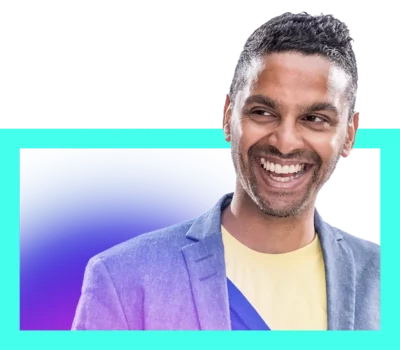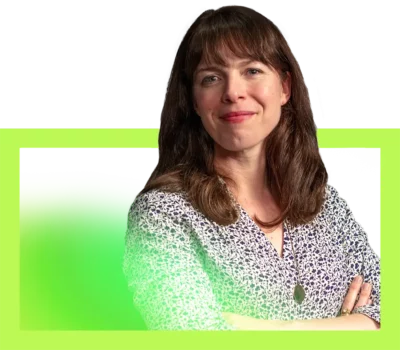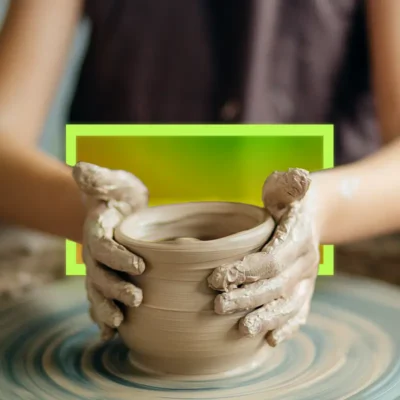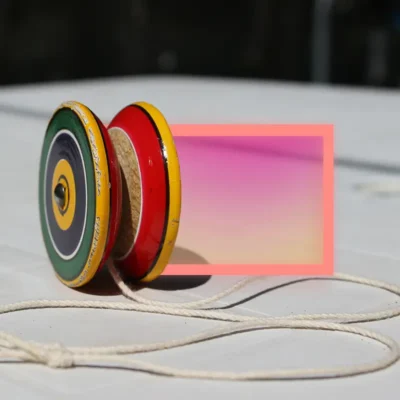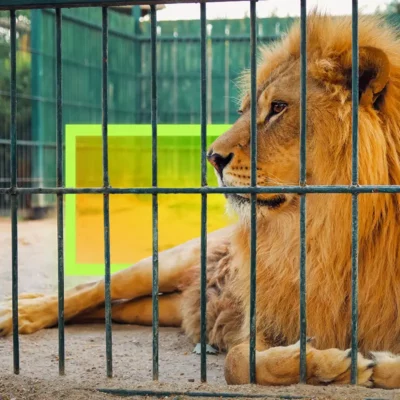Learning to see things as they are
Watching her daughter chase a balloon through a graveyard, Dr. Lucy Kalanithi comes to realize that maybe she can learn from four-year-old Cady. After the death of her husband, Dr. Paul Kalanithi, author of “When Breath Becomes Air,” Lucy focuses on Cady, on teaching Cady how to deal with grief and loss. But as Cady bounds through the cemetery, on the way to see her dad, she teaches Lucy. She sees things that Lucy misses. She doesn’t bring as many assumptions to situations, so it’s easier for her to see them as they are. For Cady, right now, at this age, things just are. Photo credit: Peter DaSilva.
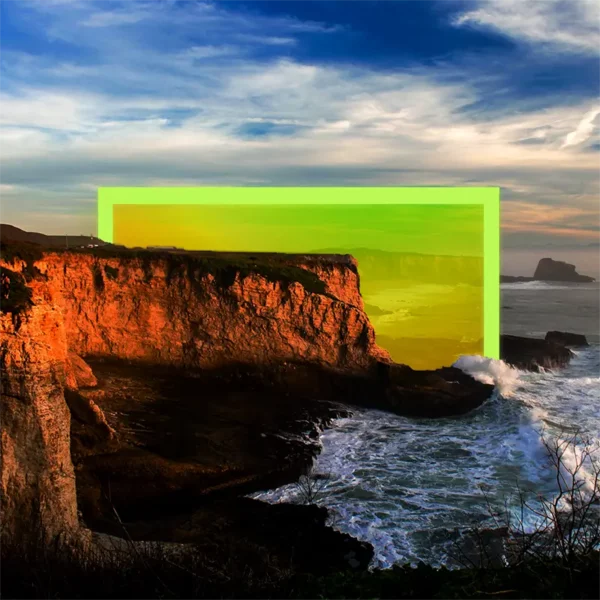
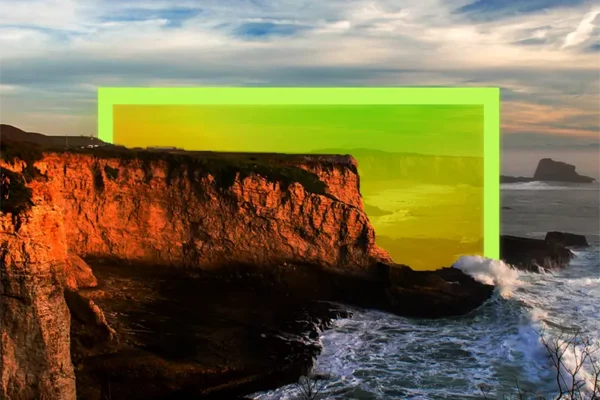
Table of Contents:
Transcript:
Learning to see things as they are
LUCY KALANITHI: Seeing things just as they are has been one of the great lessons of my life. But it’s something that I’ve had to work at consciously for years. The amazing thing about Cady – my funny, feisty, thoughtful, brave girl – is that she does it effortlessly. She doesn’t have anything to unlearn.
ROHAN GUNATILLAKE: Lucy Kalanithi is an assistant professor of medicine at Stanford Medical School in California, and the widow of Paul Kalanithi, whose posthumous memoir When Breath Becomes Air, I remember reading shortly after it was published in 2016.
The story she shares with us here is very special. It’s about how much wisdom and delight there can be – even when we’re surrounded by tragic loss – when we see life and death through the eyes of a child. Eyes unburdened.
In this series, we combine immersive first-person stories, breathtaking music, and mindfulness prompts so that we may see our lives reflected back to us in other people’s stories. And that can lead to improvements in our own inner lives.
From WaitWhat, this is Meditative Story. I’m Rohan, and I’ll be your guide.
The body relaxed. The body breathing. Your senses open. Your mind open. Meeting the world.
KALANITHI: The drive from my house to the cemetery is less than ten minutes. I wind up the Santa Cruz mountains, and then come down just a little bit on the other side. But it feels like a very different place.
The weather is different. This is the windward side of the mountain, and it’s colder and more variable than where I live. But today, it’s sunny and I can see five miles out, all the way to the ocean.
My emotions are different here. For me, the cemetery is always a physical place where I can feel my feelings. I can’t always predict them before I arrive. Sadness. Yearning. Gratitude. Remembrance. Today, I feel calm. I was a little stressed on the drive, but the moment I get out of my car and take my first breath of the air on this side of the mountain, my body relaxes. I hear the gentle sound of the wind and the squeaky chattering of the chipmunks.
I’ve brought my daughter Cady with me to visit her father. She’s four. There are things that children grow up into. Things like feeling part of a family, belonging to a religion, thinking that reading books is important, loving animals. Cady will grow up into the idea of visiting a grave. She won’t remember not knowing it.
Paul is buried at the edge of the field, facing down towards the ocean. I walk down the hill toward his granite gravestone. It’s covered in… nature. Spray from the air that travels up from the sea. Grass clippings. Bird droppings. The minerals left behind when water evaporates. I take out a rag and clean Paul’s gravestone until the polish shines. Cleaning a grave always feels so ancient, ritualistic. I sit down in the grass, lean my back against his gravestone, and look out at the water. I breathe. And I think. And I feel.
GUNATILLAKE: Breathe. Think. Feel.
KALANITHI: My mind takes me to a moment here soon after Paul died. Cady was at the age where I took her everywhere in a Baby Bjorn carrier. Tucked close against my body, she slept, both of us still. The cemetery was the only place I could breathe easily.
The first time Cady was able to walk down this hill herself, without falling, was a little under a year after Paul died. She was one and a half.
I remember bringing Cady here on Paul’s birthday when she was three. She asked if she could put stickers on Paul’s gravestone. I hesitated briefly, but I let her. It made her happy to stick sparkly hearts onto the gray stone. And it made me happy.
A place means different things to different people. We say that we’re going to a place, but it’s remarkable how much we bring to that place without even thinking about it.
Seeing things just as they are has been one of the great lessons of my life. But it’s something that I’ve had to work at consciously, for years. The amazing thing about Cady – my funny, feisty, thoughtful, brave girl – is that she does it effortlessly. She doesn’t have anything to unlearn.
To Cady, a cemetery is not sad. It’s just a place we go together, like the park or the library. She loves coming here. She gets excited every time she gets to see a deer, or pick up a snail. We lie in the grass. We talk about Paul. We tell stories. One day, I bring some flowers to put on his grave and Cady says, “Can I plant a flower garden?” She picks up each tulip and plants them one by one right into the ground. It’s that kind of place.
She knows that her father died, or as grief experts tell you to explain to children, that “his body stopped working.” She doesn’t know that his not-working body is buried a few feet underneath this very ground.
She knows about death, because sometimes bees die too and she finds their bodies. She doesn’t know that people think of death as scary, or sad. Things just are, for her.
GUNATILLAKE: What just is, for you right now?
KALANITHI: One day, Cady’s preschool teacher asks her class to draw portraits of their families. I wonder if she’ll draw the two of us, me and her. Instead, she draws three people and labels them “mom,” “dad,” “baby me.” There used to be three of us together, and now there are two of us. She knows that. She knows she has a dad. But she knows she has to be a baby if Paul’s going to be in the picture. That’s just how it is.
Things just are for her. Or things just are not.
I wish Paul were here, and I think a lot about what things would be like if he were. I miss his partnership, his counsel raising a kid. I miss him physically; I now have a bed that fits two people, and I’m one person inside of it. For me there’s an empty space. For Cady, Paul is an anchor. She drew that picture knowing that’s where she came from. But at the same time, she’s not yearning for a different family.
One afternoon, Cady finds a little golden bell on our bookshelf, with a thread on it, and asks me what it is. It’s a party gift we gave out at our wedding, made in India, and it’s really beautiful. I say, “Remember how I told you about how Daddy and I had this big party for our wedding and all of our friends and family came to celebrate when we got married? Well, we gave everybody a present. They all got to take home a bell, like this one.” She immediately asks: “Was I at that party?” She’s a kid centered in her own little world, like all of us, I suppose. I say, “No, you weren’t even born yet. You weren’t even a baby yet.” And she says, “Oh, yeah, that’s because I was dead then.”
My mind is blown. Cady knows people are either alive or dead. She doesn’t know that death is often thought of as scary or sad. She knows her father used to be alive and now he’s dead. She knows that she’s now alive but that she didn’t used to be. And she knows that for a brief moment, she and her dad overlapped, as living people, after she was born and before he died.
For me, talking about Paul with Cady is part of my job as her mom — for her sake and his. I want Cady to know his story and know it’s okay to ask about him. Every night, we read books before bedtime. I notice that Cady’s developing a keen understanding of the characters – Doc McStuffins, Peppa Pig, Little Pea. One night, I realize that’s what Paul is to her, a character she’s getting to know through stories.
For her third birthday, I make her a picture book called “Cady and Her Daddy.” It starts “Once upon a time there was a little boy named Paul Kalanithi. Paul loved cats and dogs, and he loved to read. He wanted to learn new things and help people who were having a hard time. So Paul went to school to become a doctor.”
It talks about us getting married, and about Cady’s birth: “Cady has brown eyes just like Daddy. She adores cats and dogs.” In the middle, I describe Paul’s grave, and there are pictures of it. The book says: “When Cady was still a baby, Daddy’s body stopped working and Daddy died. To help remember Daddy, Mommy and Cady visit Daddy’s grave. Sometimes the weather is sunny. Sometimes it’s windy… Sometimes they feel sad. Sometimes they feel happy. All of their feelings are okay.”
She knows that she never really got to know Paul. But she’s getting to know him through my stories. The other day, she put on two mismatched shoes and I asked her why, and she said, “This is what me and my dad do.” And she’s right.
My favorite memory of our time at the cemetery is when Cady and I visit during the Mexican holiday of the Day of the Dead. This cemetery is relatively new. The people buried here are buried recently, so the graves still get a lot of visitors. It feels like a community.
In addition to a lot of Asian Americans, like Paul, there are a lot of Mexican-Americans. When we arrive on the Day of the Dead, the first thing we see is a taco truck, with a line of people. Bright-colored clothing and beautiful outfits. A mariachi band. Adults and children get their faces painted in the traditional fashion, to look like skulls, which is so interesting to see if you’re not used to it. Festive, joyful skulls dancing through a cemetery. It feels totally, totally right. We love community, and we love tacos, and we love being at Paul’s grave.
Cady and I get two tacos each. We listen to the music and watch everyone celebrate. We walk over to Paul’s grave, and sit, and picnic. Cady gets a balloon and runs through the cemetery. It’s a real contrast, acting like that in a cemetery, but it feels totally normal and natural to Cady. And I think she’s the one who’s right.
I used to think it was me who knew more than my daughter. That I had so much knowledge and so much to teach her. That her understanding was just this little subset of mine, that came mostly from me. But I was wrong. She sees things that I miss. She’s so easily led, and then she leads me. She doesn’t bring as many assumptions to situations, so it’s easier for her to see them as they are. For her, right now, at this age, things just are.
I hope I grow up to be more like her.
Rohan’s closing meditation
GUNATILLAKE: We’ve reached the end of Lucy’s story. There’s so much to love about Lucy’s story. So much to be moved by. And the aspect that strikes me most, is that it’s not a story about her husband Paul and his not being there, it’s a story about their daughter Cady and how she is.
Her instinct to be with whatever shows up and enjoy the freedom of life without the constriction of assumptions and norms. Running free with her balloon through the cemetery. And her wisdom to discern between what it is to be dead, and what it is to be alive. It’s a lot.
To start our meditation, let’s take a moment to check in with how we’re feeling. We all have our own relationships with grief and loss and Lucy’s story may have brought up some stuff for you. It’s ok. Trust your instincts. Do what you need to do.
And if it feels ok, let’s acknowledge our feelings, just as Lucy did. If you like you can give them a name: sadness, tenderness, blankness, wishing. Whatever emotions are here, just give them a name. And if you think it’d help and it feels ok, why not place a hand on your heart. Feeling your hand there and breathing. Actually, take a few breaths here. Connecting with what is happening for you right now: the emotions, the physical sensations.
We all hold assumptions, views, ideas, and it’s through these that we filter the world. It’s just the result of having a mind and living a life. Filters have their value and their place. But the ones we carry around are not the only ways of experiencing things.
Let’s be more like Cady. Let’s be more direct. What’s here? For me right now, what’s here is some calm, some interest. What’s not here is sadness. A little while ago, while listening to Lucy’s story, I felt a twinge of sadness. But it’s not here now. What’s here for you? And what’s not here? And can you be ok with it all?
Let’s keep connections alive. Is there someone close to you that you’ve lost? And is there a story, something about them that’s made you how you are today? For Cady it’s wearing mismatched shoes. If there’s something like that for you, bring it to mind. And again, if you like you can place a hand gently on your chest, your heart.
Things just are. Or they are not.
Breathe. Think. Feel.
Sometimes we feel happy. Sometimes we feel sad. All of these feelings are ok. It’s all ok.
